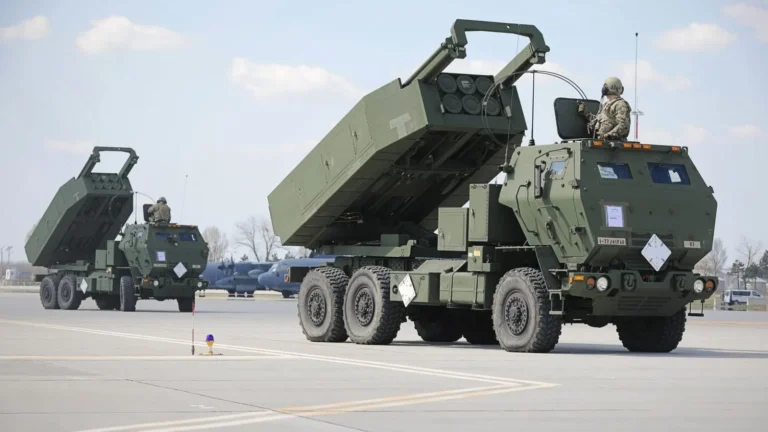Follow Us:

Share
EGLIN AIR FORCE BASE, Florida — April 2025 — The United States Air Force is marking a significant milestone in its journey toward next-generation aerial warfare, as its autonomous F-16 program, officially known as VENOM-AFT (Viper Experimentation and Next-gen Operations Model – Autonomy Flying Testbed), rapidly advances.
With the arrival of the final F-16 Fighting Falcon assigned for modification at Eglin Air Force Base on April 1, 2025, the fleet designated for the autonomous F-16 program is now complete. Three F-16s are currently undergoing extensive upgrades — including new hardware, software, and sophisticated instrumentation — to enable true autonomous flight capabilities. This marks a major leap in integrating autonomy into existing fighter platforms.

The VENOM-AFT project is a key component of the U.S. Air Force’s broader push toward manned-unmanned teaming and AI-driven operations, underpinning initiatives like the Collaborative Combat Aircraft (CCA) program.
While fully autonomous drones have already captured headlines, VENOM takes a distinct approach: it modifies existing legacy aircraft to fast-track the real-world testing and integration of autonomy software in a fighter environment.
Unlike many autonomous aircraft programs aiming for complete removal of human control, VENOM-AFT operates under a human-on-the-loop model. A pilot remains in the cockpit at all times during flight tests, monitoring and overseeing the autonomous systems in real time. At any moment, the pilot can initiate or disengage the autonomous algorithms, ensuring a critical layer of safety during the complex development process.
“There will never be a time when VENOM aircraft fly without human oversight,” program officials emphasize. This balance allows for aggressive experimentation while maintaining operational safety standards.

The modifications include an auto-throttle system, enhanced regulation of flight control surfaces, and new sensors — giving the aircraft the ability to manage thrust and flight dynamics independently under software guidance. The system is designed to handle everything from basic maneuvers to complex air combat scenarios.
Since 2024, VENOM’s autonomy software has been tested extensively through faster-than-real-time combat simulations. These simulations replicate one-on-one and two-on-two air combat missions, covering both within-visual-range (WVR) dogfighting and beyond-visual-range (BVR) engagements. Each iteration provides engineers with vital feedback, refining the AI’s decision-making and tactical behavior.
Now, with the physical fleet fully assembled at Eglin, the VENOM team is moving deeper into live flight testing. Developmental and operational testing is conducted collaboratively by the 40th Flight Test Squadron and the 85th Test and Evaluation Squadron, a unique setup that accelerates feedback loops between pilots, engineers, and developers.
This close-knit testing environment reduces traditional bureaucratic barriers and ensures that autonomy concepts can quickly move from simulation into live environments — a key advantage in an era when technological agility is a strategic necessity.
Watch: Why is the F-16 so popular
VENOM-AFT plays a crucial role in preparing the U.S. Air Force for future combat scenarios where manned and unmanned systems will operate side by side. Its focus on speed-to-ramp — quickly maturing and deploying tactical autonomy capabilities — makes it a vital bridge between today’s piloted aircraft and tomorrow’s fully networked air forces.
Rather than waiting for brand-new unmanned platforms to be developed and fielded, the Air Force is using proven F-16 airframes as highly capable testbeds. This pragmatic approach allows for real-world testing of autonomy algorithms under the same operational stresses and conditions that future systems are expected to face.
Read also: What Makes the F-16 So Special
VENOM-AFT also complements other Department of Defense initiatives like the Autonomy Data and AI Experimentation proving ground (ADAx), feeding critical insights into broader Pentagon autonomy strategies.
The Collaborative Combat Aircraft (CCA) program envisions a future where piloted fighter jets, like the F-35 and the Next-Generation Air Dominance (NGAD) platforms, seamlessly lead teams of autonomous wingmen. VENOM’s work today will directly inform how those future unmanned systems are designed, trained, and trusted in real-world missions.
By advancing autonomy within an existing aircraft framework, VENOM-AFT de-risks many of the technical challenges associated with manned-unmanned teaming. Its lessons will help shape tactics, refine AI rules of engagement, and improve autonomous air-to-air and air-to-ground performance — all while ensuring humans maintain ultimate command over lethal decisions.

As of early 2025, VENOM-AFT is transitioning from developmental testing into operationally representative scenarios, paving the way for integration into larger force exercises. The Air Force plans to evaluate how autonomous F-16s perform not just in isolated dogfights, but also in complex, multi-domain battles involving electronic warfare, suppression of enemy air defenses, and dynamic target engagement.
While the VENOM aircraft themselves are not intended for frontline deployment, their role as experimental platforms is vital. They embody a philosophy that is reshaping modern airpower: building trust between human pilots and their machine counterparts through relentless testing, refinement, and innovation.
In the coming years, as the U.S. Air Force accelerates its shift toward autonomous and semi-autonomous warfare, programs like VENOM-AFT will ensure that American pilots remain ahead — with machines not replacing them, but making them more lethal, more informed, and more dominant than ever before.
Share
Defense Feeds is publication focusing on informing, engaging, and empowering the world by providing accurate information from defense technology.
Powered by Defense Feeds © 2025 – All rights reserved.